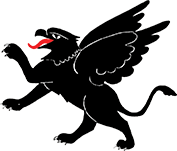The secret Japanese landing at Gona-Buna on the northeast coast of Papua was still three months away when the battalion disembarked in Adelaide on March 9. After a period of home leave and brief training, at Woodville in the Adelaide Hills, the battalion made a 5-day train trip to Casino in NSW for further training and then moved to Caboolture near Brisbane.
The truck convoy trip from Casino to Caboolture turned into a rollicking affair when the convoy stopped for a meal break at Beenleigh, home of the famous rum. Instead of a meal break many turned it into a rum break. It took some hours to get the men back into the trucks. A violent storm broke out during the round up. One observer said that by the time they were back in the trucks the men looked like “drowned, but happy, rats”.
The battalion was intensively training in South East Queensland when the Japanese made their surprise landing at Gona-Buna on July 21, 1942, and began advancing along the single-file track across the rugged Owen Stanley Ranges, intent on capturing Port Moresby, the gateway to Australia.
The news shocked Australians. Most had never heard of the Kokoda Track, as it was first known. Some parts were so remote white men had never set foot on them. The 39th Battalion, comprising mainly former Militia troops, some still teenagers, was deployed to stop the Japanese. The task proved impossible.
Undertrained and ill-equipped, the battalion suffered crippling losses and was forced to make a fighting retreat back along the track until reinforcements arrived. Remnants of the 39th had reached Deniki, near the village of Kokoda, when a new C.O., Major Allan Cameron, arrived to take over the battalion. Not knowing the full facts, he caused outrage by wrongly accusing some of the men of cowardice by running away in the face of the enemy.
The Commander of Australian Forces during the Owen Stanleys campaign, Major General Sir Thomas Blamey, also made himself highly unpopular talking about “ rabbits running” when referring to the 39th Battalion’s fighting retreat.
He claimed his comment had been misquoted and misunderstood, but many disagreed with his explanation.

The Sydney Sun afternoon newspaper was one of the first to report the bombing of Darwin, the day the war came to the Australian mainland. The newspaper published news of the disaster soon after the first attack on the morning of February 19. The Japanese bombed Broome and Wyndham the same day. A second raid on Darwin followed in the afternoon. About 260 Japanese aircraft were involved. The raid killed more than 250 people, caused widespread damage and created panic over a possible invasion. Darwin was ill-equipped and ill-prepared for the raids. Most of the outdated aircraft on hand to defend Darwin were quickly shot down. The Japanese sank 10 ships and damaged 25 others.
Fresh Australian battalions were rushed to Papua to help stop the Japanese advance. The 2/33rd and the two other 25th Brigade battalions, the 2/25th and 2/31st were called into the fight on September 1,1942. A plaque on Caboolture Railway Station near Brisbane, marks their historic departure on that date.

Above: C Company officers, Woodside, South Australia, March, 1942, soon after arriving home from the Middle East (left to right): Lieutenants Alec Dysart and William Innes, Captain Lindsay Miller O.C. and Lieutenants Hylton “Hec” Davies and Herbert Warne. Lt. Warne was killed in action at Templeton’s Crossing on the Kokoda Trail on October 14, 1942. Lt., later captain, Davies was killed, aged 30, at Balikpapan on July 16, 1945, when an Australian “friendly fire” mortar bomb mistakenly landed on B.Q. Headquarters

Above: B Company group at Ravenshoe: Norm Birrell, Dick Sargeant, Jim Sinclair, Doug Corner and Ron Birrell, Norm’s brother.

Lieutenants John Mosley and John Morath at Ravenshoe, Atherton Tablelands. Mosley was mortally wounded on the Kokoda Trail in September, 1942.

D Company officers at the field firing range Roxberg, on the Brisbane Line, July, 1942. Captain Trevor Clowes, Lieutenant Logan, a 3rd Division observer, and Lieutenants Richard Cox, Douglas Copp (Cullen) and Evelyn Watters.

Left: Lieutenants Phil Curry, Mervyn Roberts and William Prentice, at the Casino camp, April, 1942. The battalion trained at Casino before moving to Caboolture, near Brisbane, where they were undergoing further intensive training when the Japanese made ther suprise landing at Gona-Buna on July 21, 1942, which started the battle of the Owen Stanley Ranges.




